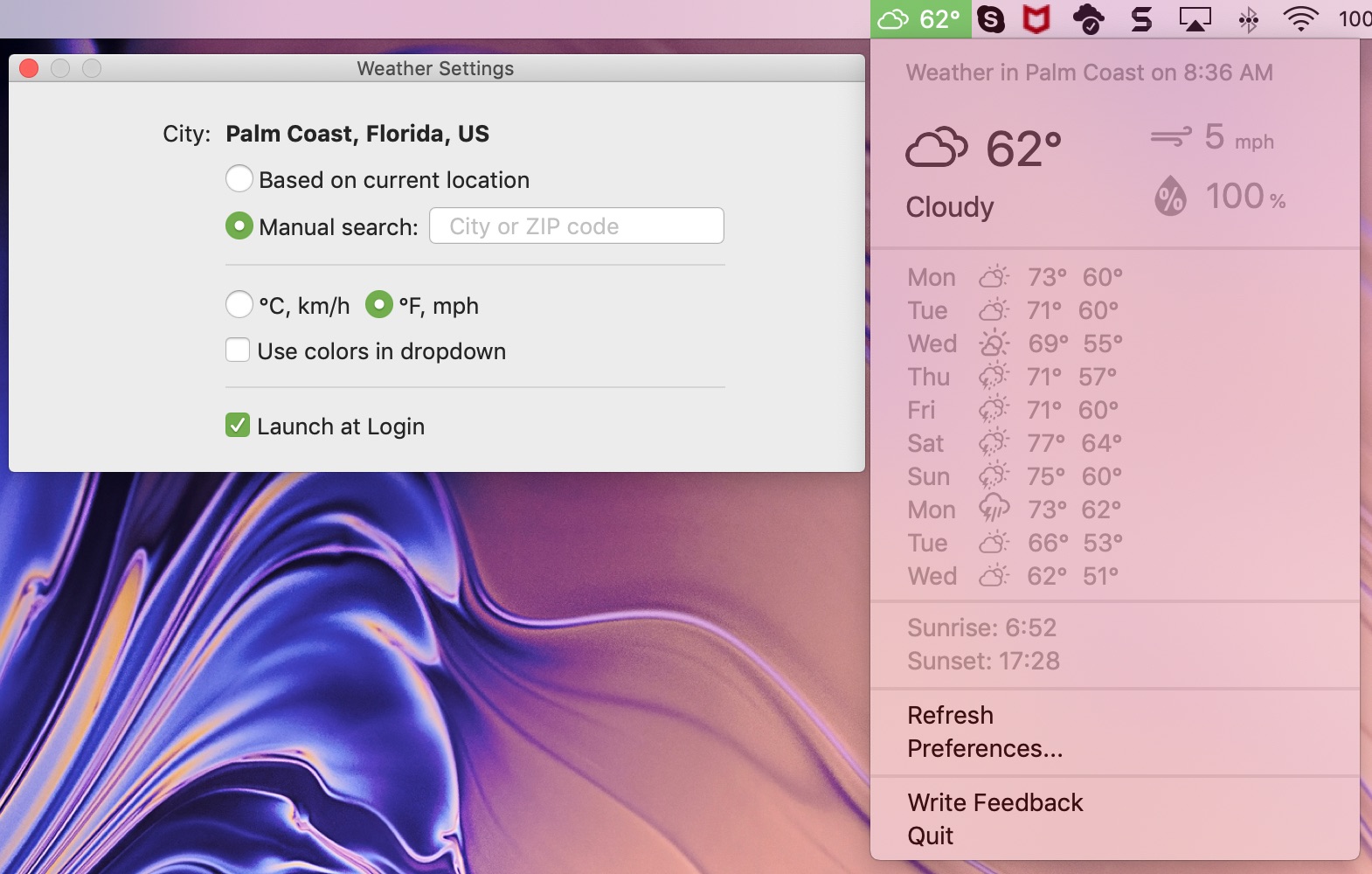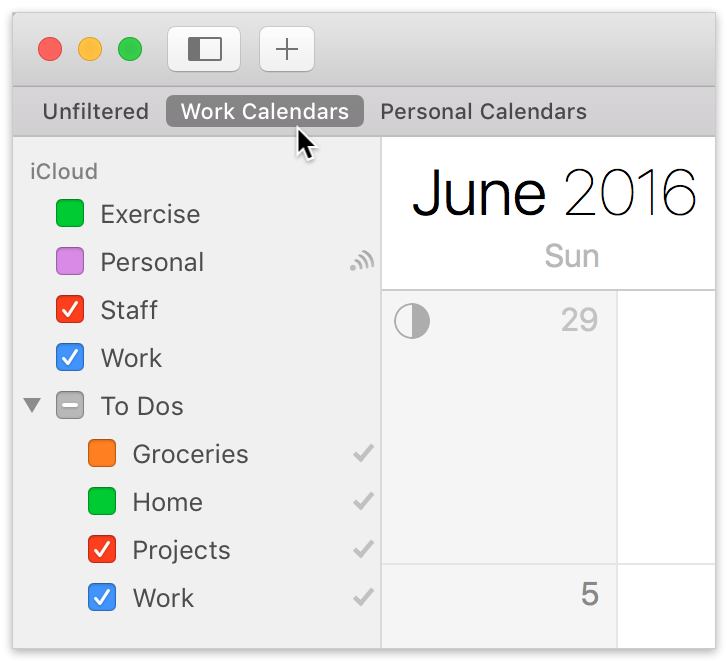Add Weather Bar Outlook Calendar For Mac

Whether you want to organize your day-to-day life a little better or are just want to know what day of the week your birthday falls on, the Calendar on your Mac can help you out. As with a lot of Apple software, your Calendar is synced with all your devices through iCloud as long as they are all signed into the same Apple ID.
How to add a calendar on Mac
In the Calendar app, you can see and view multiple calendars making it easy to differentiate your work meetings and appointments from your personal engagements and events. No matter how busy your life gets, you can add as many calendars as you want.
- Launch the Calendar app on your Mac. If it's not on your dock, you can find it in your Launchpad.
Click on File up in the menu bar.
- Click on New Calendar
- Type a name for the Calendar
Hit Enter.
How to add an event to a calendar on Mac
Aug 06, 2014 Hi, You can make this via GPO. You need to specify a custom weather service url under User ConfigurationAdministrative TemplatesMicrosoft Outlook 2013Outlook OptionsPreferencesCalendar Options in Group Policy. You need to append the 'weasearchstr= city' parameter to the base URL.This parameter indicates the location, city, for which the user wants a weather.
- Launch the Calendar app on your Mac. If it's not on your dock, you can find it in your Launchpad.
Double click on the date you want to add an event to.
- Type in a name for the event.
Click on the hour, minutes, and AM/PM of the start time and adjust accordingly.
- Click on the hour, minutes, and AM/PM of the end time and adjust accordingly.
- Click on Repeat if you want the event to repeat. This is an optional step.
- Click on Travel time if you want to add a note for yourself of how long it will take you to get there. This is an optional step.
Click on Alert if you want to set up notifications for the event. This is an optional step.
- Tap the calendar menu it's the little colored box in the top right corner of the event window.
- Click on the calendar you want the event to be added to.
Hit Enter on your keyboard.
How to set days per week and start of week in Calendar on Mac
Depending on how you like to schedule your life, you can modify how the week appears in your calendars. You can change how many days you see when you're in Week View and what day indicates the start of a new week.
How to set the days per week in week view in Calendar on Mac
- Launch the Calendar app on your Mac. If it's not on your dock, you can find it in your Launchpad.
Click the Week tab.
Alcatel Announces Next Evolution of its Speed Touch USBRelease 1.4 of modem ADSL increases ease of installationParis, October 16, 2001 - Alcatel (Paris: CGEP.PA and NYSE: ALA), the world leader in Digital Subscriber Line (DSL) and broadband solutions, today announced a new driver set for its Speed Touch (TM) USB, release 1.4. Alcatel 5041c usb drivers. Next to the introduction of support for Windows XP and Mac OS X, the latest Operation Systems versions for PC and Mac, it also eliminates the need for an additional PPPoE client, for those networks running PPPoE.For further details go to and click on the story 'Alcatel Announces Next Evolution of its Speed Touch USB' from the 16th of October.
- Click Calendar from the menu bar.
Click Preferences.
- Click on the dropdown menu beside Days per week.
Click on 5 or 7.
How to change the start of the week in Calendar on Mac
- Launch the Calendar app on your Mac. If it's not on your dock, you can find it in your Launchpad.
Click the Week tab.
- Click Calendar from the menu bar.
Click Preferences.
- Click on the dropdown menu beside Start week on.
Click the day you want to use.
How to set how often Calender refreshes.
If you want all your calendars across all your device to sync automatically or you'd rather push them manually, you can change the time between refreshes in your preferences.
- Launch the Calendar app on your Mac. If it's not on your dock, you can find it in your Launchpad.
Click Calendar from the menu bar.
- Click Preferences.
Click on the Accounts tab.
- Click on the dropdown menu.
Click on the time interval you want.
How to set notifications in Calendar on Mac
While you can customize alerts for events when you create them, if you want to save yourself some time, you can set all events you create to have default notifications.
- Launch the Calendar app on your Mac. If it's not on your dock, you can find it in your Launchpad.
Click Calendar from the menu bar.
- Click Preferences.
Click on the Alerts tab.
- Click on the Events dropdown menu.
Click on the time you want notifications to alert you.
How to enable and disable calendars on Mac
Best way to create html email signature in outlook for mac. If you want to quickly filter the events you see on your Calendar, you can easily enable or disable the visible calendars whenever you want.
- Launch the Calendar app on your Mac. If it's not on your dock, you can find it in your Launchpad.
Click Calendars.
- Click the check box beside the calendar you want to disable.
Click the check box again when you want to view that calendar again.
Questions?

Anything else you want to know? Be sure to leave us a comment below.
macOS Catalina
Main
We may earn a commission for purchases using our links. Learn more.
an interesting turn of eventsBrazil court rules in favor of Apple over iPhone slowing
A court in Brazil has dismissed a case against Apple over the iPhone slowdown controversy as unfounded after authorities determined that Apple had taken appropriate action.
The Mac Dashboard provides an easy way to see and use widgets, mini-applications that grab specific information from the Internet or help with narrow but useful tasks. The typical Dashboard arrangement includes a calendar, a clock, a translator, a flight tracker, weather, and more. You can move widgets around, add new ones, and drop old ones. You’re in charge.
To work with widgets, you just need to know a few tips:
To make your widgets appear, press F12. The desktop you’ve been working on grays into the background, and a layer with colorful widgets appears.
To add more widgets, click the plus sign in the lower-left corner. A scrolling list appears at the bottom of your screen. Click icons for widgets you want to add.
Click the plus sign when you want to delete widgets. When you do, all the current ones show up with an X in the upper-left corner. Click the X, and they’re gone.
Many widgets have a lowercase i in the lower-right corner. Click it, and the widget flips over and shows you what settings you can adjust to customize it.
Apple includes a collection of widgets with OS X, but many more are available from Apple’s Web site. Many are freeware, but some ask for a fee.